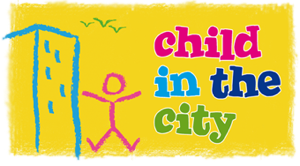Parallel session: Child-friendly: from local to national (14:00 – 15:30)
Presentation 1: Child-friendly Breda
Presented by: Inge Wolters
Abstract: Residents and their initiatives in Breda are important to keep our neighborhoods livable. The children of today are the residents of the future. In twenty years they will be the parents, professionals, entrepreneurs (and so on!) of Breda. By involving the children and young people in the issues of the city at a young age, we invest in social involvement in later life. Moreover, all children and young people deserve a pleasant living environment. An environment in which they can develop and have the space to play, to move, to recreate, to live and to grow up healthy. We want to involve children and young people in the topics that concern them so that they contribute to the neighborhood and city in which they grow up. We do this under the approach of ‘Breda Kindvriendelijke Stad’. Participation is the main theme in this approach. By talking to the children and young people, we know how we can fit the physical and social facilities in Breda for these young inhabitants. Child-friendliness, therefore, covers all policy areas and is an integral approach. In 2017 and 2018 we focus on 2 themes: ‘On the road and meeting places in the neighborhood ‘and ‘Leisure and talents’. Our presentation provides insights into our approach: How we involve children and young people, and also inspire colleagues and organizations to be child-friendly. Some example projects will be highlighted.

Presentation 2: Mechelen, child-friendly city in evolution
Presented by: Karen Claes
Abstract: Mechelen has 86.000 inhabitants. As a staff member child-friendly city, my target group is 14.000 children between 0 & 12 years old. It’s still our mission to make the everyday environment of ALL children priority and work across our organization with an intersectional child-friendly approach to all services and policy areas, also with external partners. But we combined our citywide approach more with our social department that has a focus towards children’s rights and together with our marketing and events, we make one child-friendly city. Fighting against children’s poverty is a prior for our local government and we work hard to secure all the children’s rights by working and investing in different paths to guarantee a healthy environment. We have some successful examples as the family justice center (domestic violence help from one central location), GO team (family support and welfare assistance) and the PACE project (day-care in combination with employment for the parents). We innovative with affordable rental properties, helping register vulnerable families for education, the creation of an inviting public domain and participation in different stages, support with homework and so on. It’s important to have a child-friendly check at the start of projects and to hear the voice of the children. We have a children’s council with different (ethnic) backgrounds, together we develop their ideas. We also work on accessibility and diversity so everyone can participate in our city. We received an official national child-friendly label for our approach and we exchange ideas within our national network with other child-friendly cities. We also look around for worldwide inspiring examples.

Presentation 3: Communicating With them instead to them. Young Hoogeveen has the future!
Presented by: Gert Vos
Abstract: In 2015 Hoogeveen, a Dutch municipality, was one of the top 20 cities with the biggest problems with regard to youth in care, impoverished families, violence and unemployment, among many things. In order to change this around and learn from the successful practices of Leeds, a delegation of professionals from schools and (youth) care organizations from Hoogeveen visited this British child-friendly city. The adopted approach and execution of projects in Leeds, inspired the Dutch participants. In particular, three aspects of the practice in Leeds took their interest: the leading position of the children and parents in the project, the hands-on and clearly defined manner of planning and reporting on social urban development, and the training of professionals to effectively talk with children ánd their parents. We integrated these three aspects from the onset of the development of our project Young Hoogeveen. We started the project talking with more than thousand children and their parents about which challenges they face in everyday life. And witch changes they want to realize. The five biggest challenges and obsessions they came forward with were poverty, safety at home, not enough after-school activities, education and work and guidance within the school and at home. So this was the starting point for us all to work with them! In our workshop, we will present an overview of our own developed approach, activities, and results of Young Hoogeveen, the last two years. More specifically, we will outline what worked and didn’t work. Above all the workshop is an opportunity to exchange tips, tricks and tools. We are looking forward to being inspired by your views so we can reach our goal of making Hoogeveen a healthy and safe environment for all children.

Presentation 4: The child and the heart of the growth strategy in Leeds (UK)
Presented by: Sue Rumbold
Abstract: Leeds is a city in the north of England. Its population of approximately 850,000 includes 185,000 children and young people. We have a bold ambition to become a child-friendly city which means that we are committed to ensuring that the voice of the child and young person is heard throughout our planning process and importantly that their voice has real influence. In order to do that, a team of skilled professionals work with the children and young people of Leeds. This work includes; a children’s mayor (the children’s mayor is always aged 10 or 11 and is directly elected by their peers in that age bracket), Annual Youth Voice Summits for children and young people who engage in UK Youth Parliament campaigns, support for our four elected members of the UK Youth Parliament and support for our Leeds Youth Council which has over 450 members and an active working group who regularly meet with key decision makers. Our presentation will include an overview of our child-friendly Leeds work, our commitment to the voice and influence of children and young people. It will also describe a recent project where children were invited to propose child-friendly activities and developments for our city centre. The winners of this competition will see their proposals become a reality. Our child-friendly approach has been cited as good practice in the report Cities Alive: Designing for Urban Childhoods published by ARUP.

